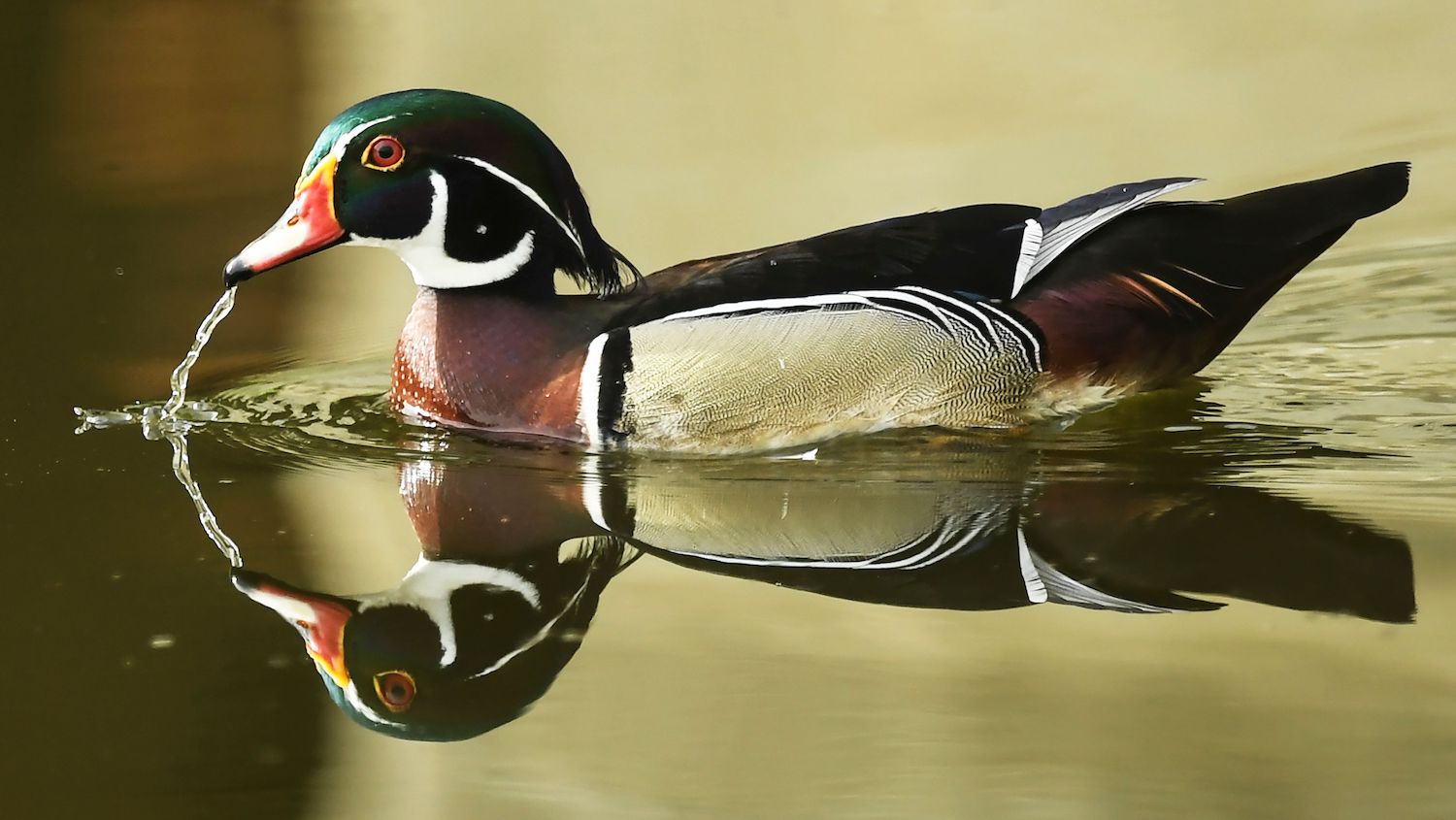Consider the duck. What a bird! Ducks offer so much: They are beautiful creatures, you can eat them, they are a critical part of our shrinking American wetlands, you can hunt them for sport or sustenance, they serve as mascot for some classic cartoon characters and sports teams, their flesh is objectively delicious fried or pan-seared, they have a unique penile anatomy, and also you can shoot them with a gun.
Perhaps the U.S. Fish and Wildlife Service only kept a few of those benefits in mind when they revised the rules for this year's Federal Duck Stamp contest. The USFWS holds the annual contest for artists to design a special duck-adorned stamp that they then sell to raise money for habitat conservation efforts. The duck stamp specifically has been one of the biggest factors behind American waterfowl's emphatic recovery from overhunting and the devastating loss of habitat that came with the draining and drying-out of the Midwest.
However, Trump-appointed officials announced in May a new and permanent rule requiring that artists celebrate "waterfowl hunting heritage" by featuring an "appropriate waterfowl hunting scene and/or accessory" in every painting. Imagine the Met holding a mountain-scene painting contest but each mountain had to be in the process of getting strip-mined to show the might of the mining industry. The new rule means Eddie LeRoy's 2019 winner showing two gorgeous black-bellied whistling-ducks would be ineligible unless it also included an instrument of their destruction.
As our friends at the Audubon Society noted, every one of this year's submissions featured some hunting stuff, to varying degrees of enthusiasm: spent shotgun shells, a floating duck call, or a dog or person in the foreground in the act of hunting the duck. The winning entry adheres to the new guidelines pretty tastefully, and you might not even notice the floating duck call. Some feature hunting falcons, while others show a retriever or a floating decoy next to the genuine article. There is only one that highlights our hunting heritage by backgrounding what appears to be a merganser with a Lynchian tableau of blurry hunters' faces, blankly grinning as they melt into the otherwise placid water. This year's winner, Richard Clifton, is not a fan of the new rule. “I’m a pretty big-time waterfowl hunter, and I don’t feel like it’s necessary,” he told Audubon. “I’d much rather see a straight-up duck painting.”
We should note here that hunters have played a vital part in the duck stamp's historical success, and vice versa. The idea was hatched by hunter and Pulitzer-winning political cartoonist J.N. "Ding" Darling, and hunters still make up the majority of people who purchase a duck stamp, since they must do so to renew their licenses. Conservation efforts have essentially doubled the population of North American waterfowl over the past 60 years, and hunting organizations have played a central role in that
That said, requiring that every eligible piece of duck stamp art reference hunting is both baffling and overly on-the-nose in the exact same way many of the smaller scandals originating from the more remote branches of the Trump administration have been. The country's top bird agency stating that ducks exist only to be killed and we should be forever reminded of that fact is just as buffoonishly extractive as the Bureau of Land Management moving into the same office building as Chevron, albeit with lower stakes. Not only is it weird and gross, but it's probably bad for the ducks themselves.
There are 2.6 million American waterfowl hunters, but over 47 million self-identified bird watchers, per a 2012 USFWS release. The numbers of hunters is also declining, while the number of people participating in other outdoor activities is on the rise. One-third of people who bought duck stamps, according to data from 2017, were not hunters, and shoehorning hunting equipment into the otherwise beautiful paintings of waterfowl risks alienating those non-hunters who just want to collect stamps or look at a pretty bird. As Obama-era USFWS chief Dan Ashe told Audubon, “I don't see it as supportive of where the community has been trying to go for a long time, and where we need to go.”






